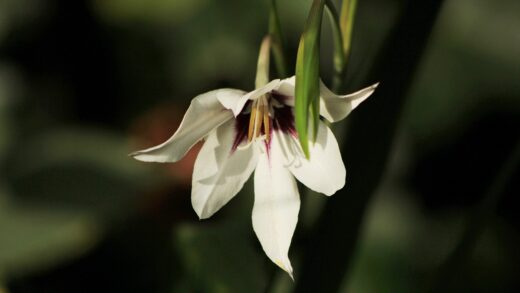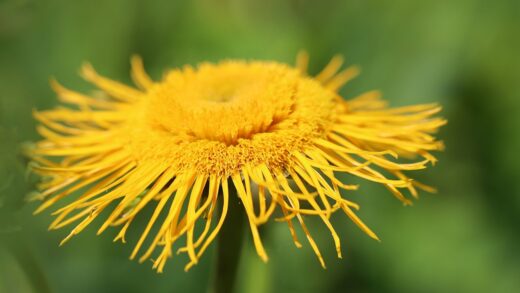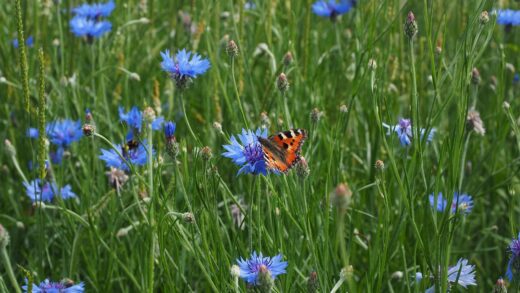The amount of sunlight a weigela receives is one of the most significant factors influencing its overall health, growth habit, and, most importantly, its ability to produce a profusion of flowers. As a sun-loving deciduous shrub, weigela performs at its peak when provided with ample direct light. Understanding the specific light requirements of this plant is fundamental to selecting an appropriate planting site and ensuring the shrub can achieve its full ornamental potential. An improperly sited weigela may survive in lower light conditions, but it will never exhibit the vitality and floral abundance that makes it such a prized garden specimen.
Light is the primary source of energy for plants, driving the process of photosynthesis, which converts light energy into the chemical energy needed for growth. For flowering shrubs like weigela, a high level of energy production is required to support not only the development of healthy foliage but also the formation of a vast number of flower buds. Insufficient light directly translates to reduced energy, which forces the plant to compromise, often by sacrificing its flowering capacity in favor of basic survival.
The intensity and duration of light also have a profound effect on the physical characteristics of the weigela. Cultivars that are selected for their unique foliage colors, such as deep burgundy or variegated patterns, require sufficient sunlight to develop and maintain these vibrant hues. In lower light, the foliage of these varieties often reverts to a less spectacular green, diminishing their season-long visual interest. The density and form of the shrub are also impacted, with sun-grown plants typically being more compact and robust.
This article will provide a detailed examination of the light requirements for weigela. We will explore the optimal conditions for maximizing bloom production, the noticeable effects of insufficient light on the plant’s health and appearance, and how to successfully cultivate weigela in locations that offer partial shade. By gaining a clear understanding of how weigela interacts with its light environment, you can make informed decisions that will lead to a healthier, more beautiful shrub.
The importance of sunlight for weigela
Sunlight is the essential fuel that powers the growth and flowering of a weigela shrub. The plant harnesses light energy through chlorophyll in its leaves to create sugars, which are used to build tissues, develop roots, and produce flowers. For weigela, a genus known for its spectacular floral displays, a high-energy budget is necessary to support the development and opening of hundreds of individual blossoms. Therefore, providing adequate sunlight is the most direct way to ensure a breathtaking performance each spring.
More articles on this topic
The quantity of sunlight a weigela receives directly correlates with the number of flower buds it will set. Weigela blooms on wood produced in the previous year, and the development of those flower buds is heavily influenced by the light conditions during that prior growing season. A shrub that receives abundant sun throughout the summer will be able to photosynthesize at a high rate, storing up the energy reserves needed to form a multitude of flower buds for the following spring.
Beyond its role in energy production, sunlight also plays a crucial part in maintaining the plant’s health and resilience. A weigela grown in full, direct sun will have stronger, sturdier stems and a more robust overall structure. Furthermore, sunlight and the associated air movement help to keep the foliage dry, which is one of the most effective preventative measures against common fungal diseases like powdery mildew and leaf spot, which thrive in damp, shady conditions.
In essence, while a weigela might be able to tolerate less than ideal light, it will only truly thrive and perform as intended when its fundamental need for sunlight is met. Siting the plant correctly from the outset is far easier than attempting to remedy the issues that arise from a light-deficient location. Prioritizing a sunny spot is the foundational step in cultivating a healthy, floriferous weigela.
Optimal light conditions for flowering
To achieve the most prolific and vibrant display of flowers, a weigela should be planted in a location that receives at least six hours of direct, unfiltered sunlight each day. This is what is commonly referred to as “full sun.” This duration of light exposure provides the plant with sufficient energy to maximize its photosynthetic output, which in turn fuels the production of a dense and abundant crop of flowers. The morning sun is particularly beneficial, as it helps to dry dew from the leaves quickly, reducing the risk of disease.
More articles on this topic
The quality of the flowers is also enhanced by optimal light conditions. The pigments that give the blossoms their rich pink, red, or white colors are often produced more intensely in response to strong sunlight. A weigela grown in full sun will not only have more flowers, but those flowers will likely be more vibrant and true to the cultivar’s intended color. The overall visual impact of the shrub during its bloom period is therefore significantly amplified.
For weigela cultivars prized for their colored foliage, such as those with deep purple, bronze, or variegated leaves, full sun is absolutely essential. The production of the non-green pigments that create these striking colors is a direct response to high light levels. In insufficient light, the plant will produce more chlorophyll in an attempt to capture more light energy, causing the leaves to revert to a plain green color and lose their special ornamental value.
When selecting a planting site, observe the sun’s path across your garden throughout the day to identify locations that meet the six-hour minimum. It is important to consider how the light might change with the seasons, as the sun’s angle is lower in the sky during spring and autumn. Also, take into account the future growth of nearby trees or structures that might eventually cast shade on the chosen spot.
The effects of insufficient light
When a weigela is planted in a location that receives less than the optimal amount of sunlight, several negative consequences become apparent. The most noticeable and disappointing effect is a significant reduction in flowering. The shrub may produce only a few scattered blooms or, in very shady conditions, fail to flower at all. The plant simply does not have enough energy to allocate to reproduction, so it prioritizes basic survival and vegetative growth instead.
The growth habit of the weigela will also be negatively affected by low light. In an attempt to reach for more light, the shrub will often become “leggy,” characterized by long, sparse branches with large gaps between the leaves. This open, gangly appearance is a stark contrast to the dense, gracefully arching form of a sun-grown specimen. The stems may also be weaker and more prone to flopping over, especially if they do manage to produce flowers.
Foliage quality and health also suffer in the shade. As mentioned, colored-leaf varieties will lose their distinctive hues and turn green. Additionally, the overall health of the foliage can decline. In shady, damp conditions with poor air circulation, the leaves remain wet for longer periods after rain or dew, creating an ideal environment for fungal diseases. A weigela grown in the shade is far more likely to struggle with persistent issues like powdery mildew and leaf spot.
Ultimately, a weigela struggling in insufficient light is a stressed plant. This chronic stress weakens its natural defenses, making it more vulnerable not only to diseases but also to pest infestations. While the shrub may persist for many years in a shady spot, it will be a shadow of its potential self, requiring more maintenance to combat disease and never providing the spectacular floral show that is its main purpose in the garden.
Adapting weigela to partial shade environments
While full sun is the ideal, weigela can tolerate and perform reasonably well in partial shade, provided it still receives a decent amount of direct light. Partial shade is typically defined as a location that receives between four and six hours of direct sun per day. If you must plant a weigela in such a location, it is crucial to ensure that the sunlight it does receive is of good quality, preferably morning sun, which is less intense than the harsh afternoon sun.
When planting in partial shade, expectations regarding flowering should be adjusted. The shrub will likely produce fewer flowers than it would in a full sun location. However, by selecting the right cultivar, you can still achieve a satisfying display. Some older, species-type Weigela florida varieties are known to be slightly more shade-tolerant than some of the highly hybridized modern cultivars that have been bred for specific foliage colors.
In a partial shade setting, providing excellent air circulation becomes even more critical to help prevent fungal diseases. Avoid planting the weigela in a crowded bed or against a solid wall where air cannot move freely around the plant. Pruning to thin out the interior of the shrub can also help to improve airflow and allow more light to penetrate the canopy, which will encourage more even growth and better overall health.
Careful management of other cultural conditions can help the weigela compensate for the lower light levels. Ensure the plant is in fertile, well-drained soil and receives consistent moisture, as these factors will help it make the most of the energy it can produce. By optimizing all other growing conditions and carefully managing disease pressures, a weigela can still be a beautiful and worthwhile addition to a garden that does not offer a perfect full-sun location.


















